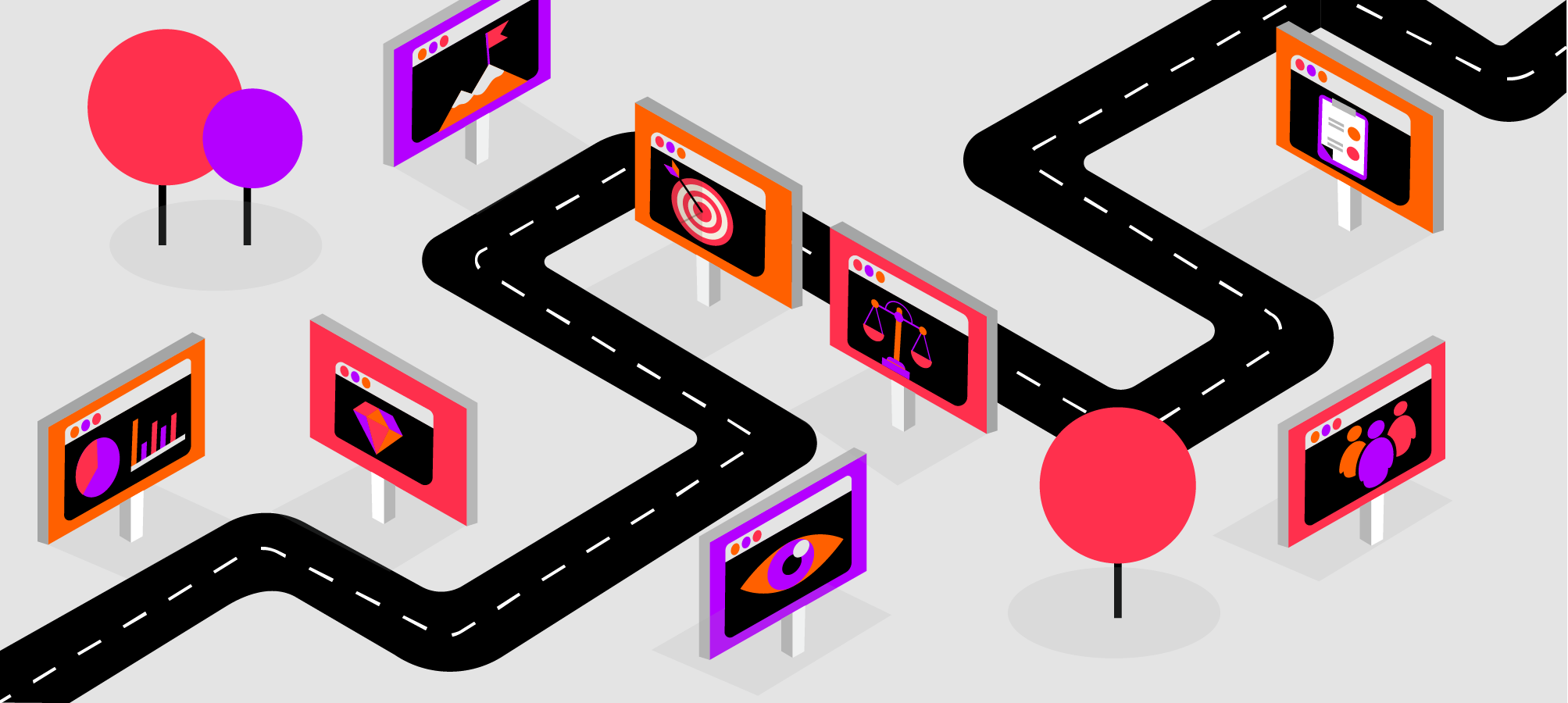Why You Need a User Experience Roadmap

Since the time we first wrote about User Experience strategy, nothing has really changed in terms of industry-wide acceptance of a specific standard or format that this document should follow. A UX strategy is still something that UX leaders decide and agree upon within their organization, hence so many different views on what the strategy should look like and what components it should include.
However, this does not mean that the industry isn’t mature enough to recognize the importance of a UX strategy, it’s just that we collectively agree that there is no “one-size-fits-all” solution. Companies should always focus on creating a strategy that works best for their business and their users.
But, if you’re a smaller organization and you need some help in creating a roadmap for how to successfully embed business goals into your UX design process, this article is for you. We’re not going to get into specifics of building a user experience strategy, but we’re going to give you some tips on how to create a UX roadmap that focuses on the ‘big picture’ and that you can easily follow.
What is a UX Roadmap Anyway?
A roadmap is not a UX strategy but it is still a strategic document. It’s a high-level overview of the plans and goals you have for your product’s overall user experience.
The reason you create a UX roadmap is to document everything you need to do to achieve your goals at the intersection between business goals, user needs, and technical capabilities of your company. Already this sounds complicated, but it helps to keep in mind that a roadmap of any kind doesn’t go into excruciating details of the process. It needs to be concise, actionable, and easy to understand and follow.
At the end of the day, this document is only useful if every team member can reference it when needed to understand the UX goals for the product they’re working on.
Components of a UX Roadmap
All successful digital products have one thing in common - they are designed and engineered with strong focus on user experience. But this can’t be done without a documented plan. There has to be a roadmap of some kind that outlines UX objectives and provides guidance regarding what needs to get done in order to achieve the desired results.
In its simplest form, A UX roadmap includes the following components.
UX Vision – Your vision statement summarizes the type of experience you want users to have with your digital product. It focuses on user outcomes and outlines how you’ll support them in achieving their goals, but it also communicates how those user outcomes support your business objectives. UX vision is key to aligning your team around an overarching UX goal, guiding their decisions in providing the best solutions to the users.
User Definition – Knowing your user and their goals is the alpha and omega of UX design. Having well-researched user personas as part of your UX roadmap is essential for designing a useful digital product and a great experience for the users.
You need to be clear about who your product is serving, what challenges it is solving for users, and how it supports them in achieving their goals. Keep in mind that your user personas are not a ‘create it and forget it’ type of document. You’ll evolve them over time by keeping a close eye on your user’s pains and needs by doing regular user interviews and usability testing sessions.
Value Proposition – Articulating the value that UX brings to your product and your business will make you more effective in designing the experience you envisioned. Your value proposition should outline why customers should buy your product, the value you promise to deliver, and how the user experience that you provide separates your product from competition.
Goals and Success Metrics – Your user experience goals should put the emphasis on users and enhancing their satisfaction with the product. To be able to track success, you need to determine your key performance indicators and how you are going to measure them.
Your UX metrics should take into account both user behavior (e.g. adoption, conversions, task completion, retention, etc.) and attitude (e.g. recommendations, satisfaction and ratings). However, the exact metrics will depend on your specific product and the goals you’ve set. Your team should be able to reference this section of your UX roadmap whenever there’s a need to check if their efforts are being properly measured.
Design principles – Documented design principles will make a huge difference for your team as they will provide necessary guidance for each design decision they make. Without a set of design principles in place, covering everything from visual design to UX and UI design, you won’t be able to create a consistent user experience throughout your digital product.
A roadmap keeps the UX team from wandering and provides them with a foundation for creating better-designed user experiences in their digital products.


